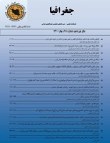Optimal Resilience Pattern in Problematic Urban textures Case Study: Farahzad neighborhood of Tehran
The main aim of doing this research was to assess the resilience in Farahzad neighborhood of Tehran. In order to assess resilience in social, economic, and managerial- institutional dimensions, questionnaire method was used and in order to assess physical section, field study and GIS software was used. One of the most important ideas that has been going on in current decade about crisis management and also urban management, is to create resisting cities and cities than can resist various crisis. Urban resilience can be described as the ability of an urban area to resist against dangers such as climate change, accidents, economic and social poorness to resist against them, absorb and adapt them or to avoid them. The thought of resilience in complicated systems such as cities, enables the understanding of mobility and nonlinear relations in such systems. This thinking, in the modern urban zone, the ability to integrate human and ecologic factors in urban systems and understanding their interactions, enables the extension of sustainable strategies according to the identified attractions. Today, mostly cities and settlement societies are created or built in such places that in terms of natural disasters are in danger of various of them and or because of technological advances are in danger of human made accidents. The perspective that has been there in management of accidents and urban management, has been mostly conflicting and decreasing the dangers. About the assessments done on social resilience in Farahzad neighborhood, based on the completed questionnaires, it can be said that the social tendency to participate with an average of 3.94 was ranked first. In second rank, is social ties with neighbors with an average of 3.82 and in third rank is the ability to adapt to tensions and chaos with an average of 3.64. Factors of participation in decision making and level of participation to solve the crisis with 3.55 and 3.46 averages in order, are ranked fourth and fifth. Local understanding of danger with an average of 3.15 is on sixth rank and knowledge and awareness of crisis with average of 2.95 is ranked seventh. Altogether, the sum of social resilience in the studied neighborhood was 3.50 which can be said that the level of social resilience in Farahzad neighborhood is at an average level.
- حق عضویت دریافتی صرف حمایت از نشریات عضو و نگهداری، تکمیل و توسعه مگیران میشود.
- پرداخت حق اشتراک و دانلود مقالات اجازه بازنشر آن در سایر رسانههای چاپی و دیجیتال را به کاربر نمیدهد.


